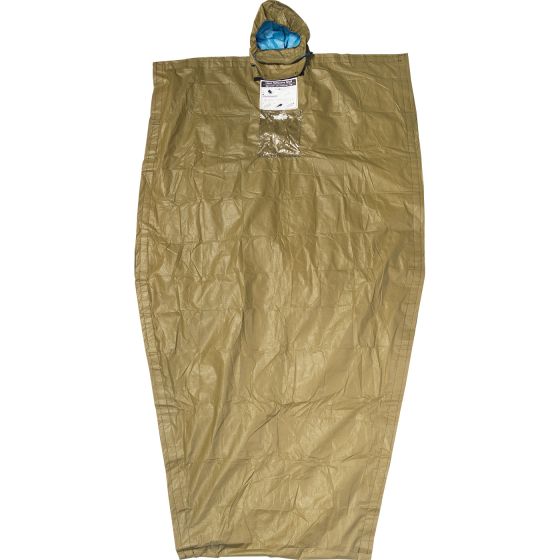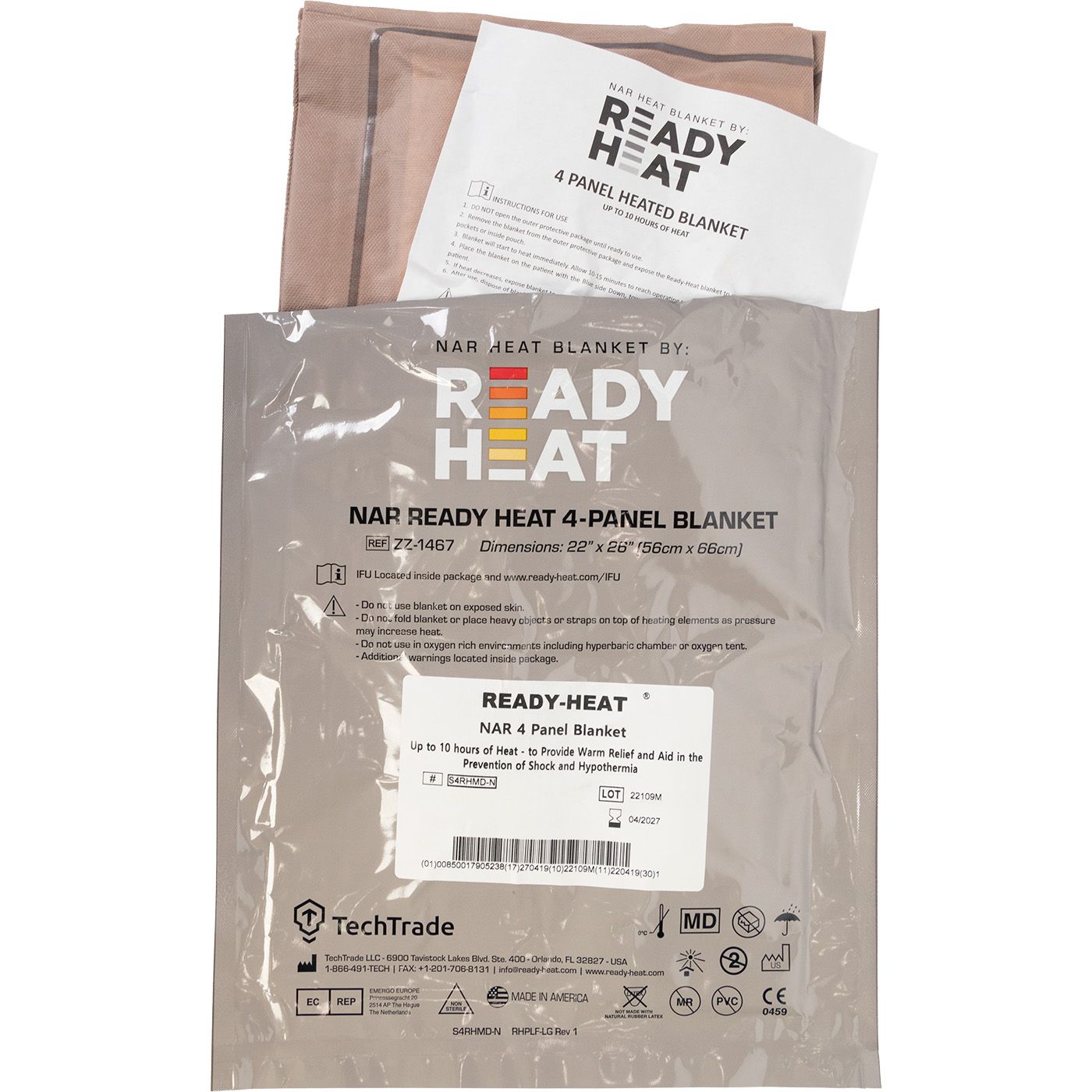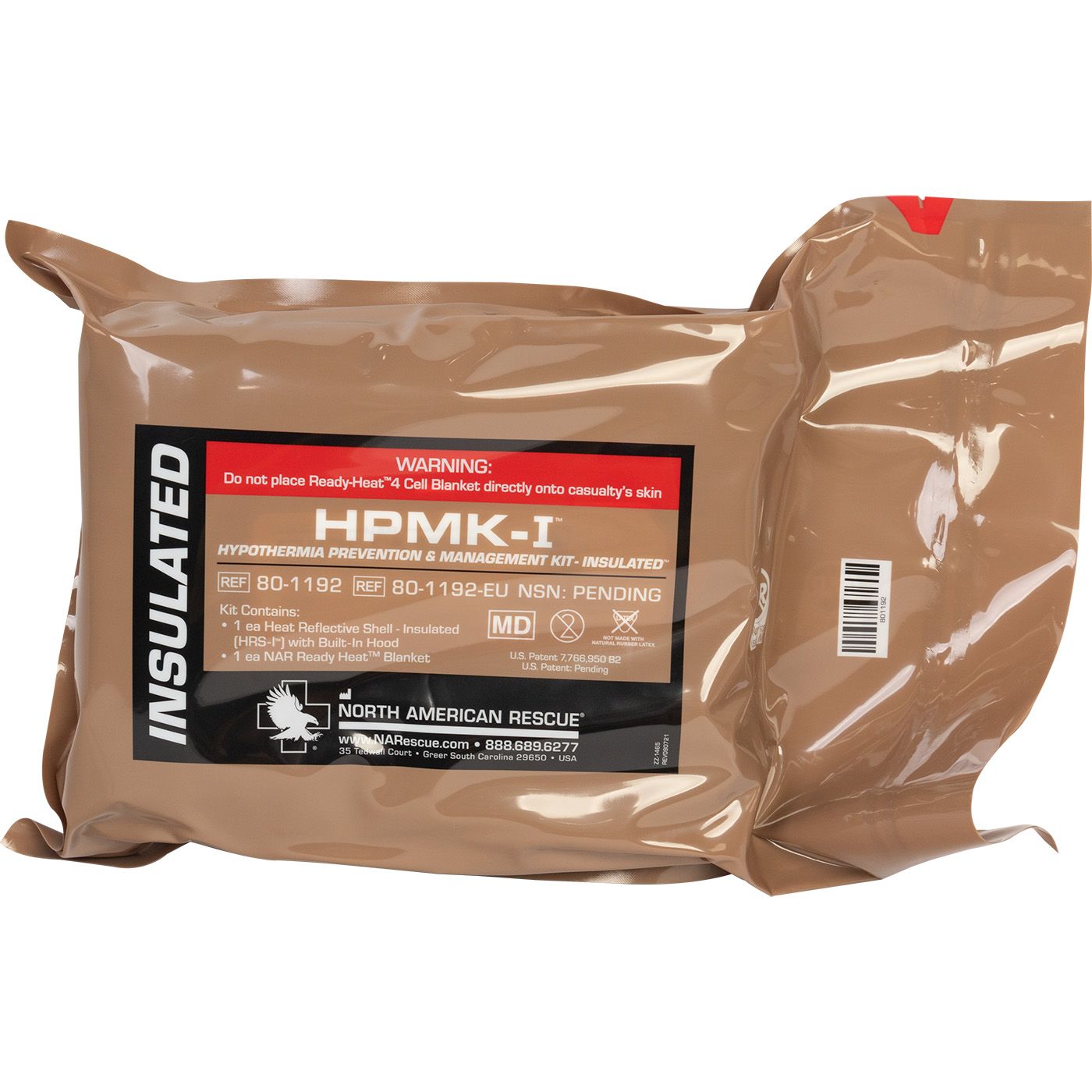Thermal blanket in tactical medicine
Content
- The Role of Thermoregulation in Life Preservation
- What is a Thermal Blanket?
- Application of Thermal Blanket in Tactical Medicine
- Effectiveness of Thermal Blankets
- Advantages of Rescue Blankets
- Innovations in Thermal Blanket Development
- Modern Materials
- Integration with Other Medical Devices
- Practical Aspects of Using in Military Medicine
- FAQ
- How is a thermal blanket used in tactical medicine?
- Why is a thermal blanket important in tactical medicine?
- What types of thermal blankets exist in tactical medicine?
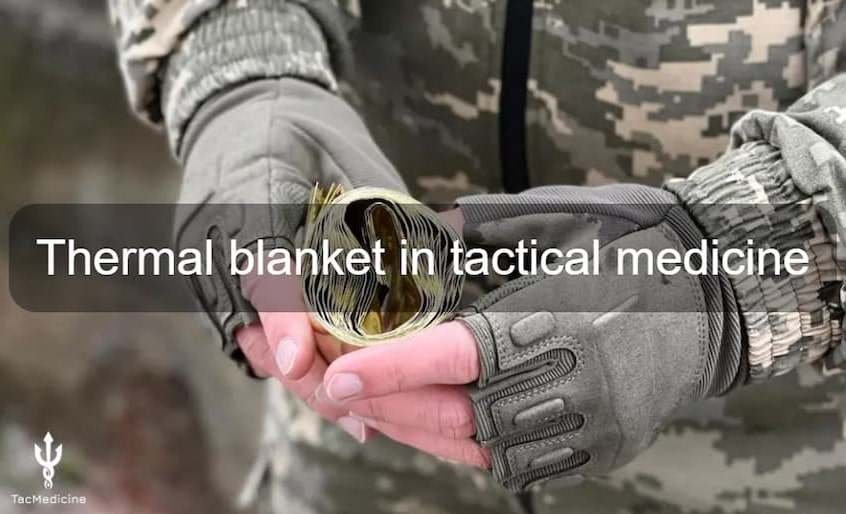
In 1964, NASA developed a rescue thermal blanket, which later began to be widely used by rescuers. This item became an integral part not only of car first aid kits but also a mandatory item for experienced tourists traveling in harsh conditions.
An isothermal rescue blanket essentially consists of a polyethylene film coated with a thin layer of aluminum. On one side, it has a silvery color, and on the other - golden. This technology ensures the preservation of body temperature and saves lives.
The Role of Thermoregulation in Life Preservation
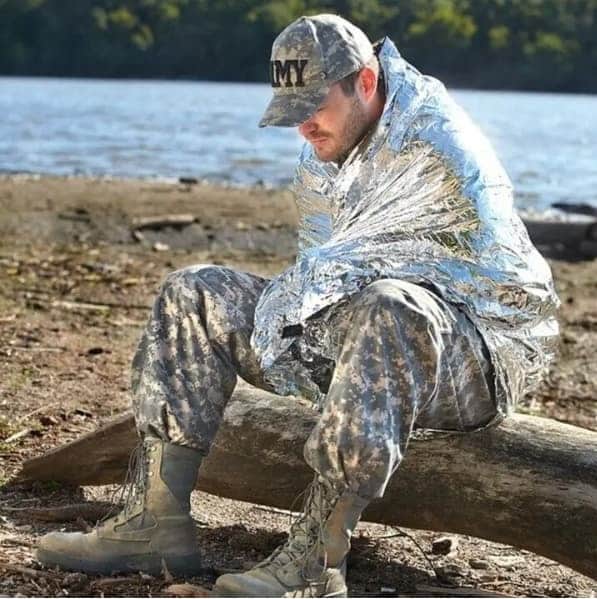
Thermoregulation plays an important role in preserving life as it influences the maintenance of optimal body temperature. The human body is very sensitive to temperature changes, and maintaining appropriate thermal balance is a key aspect of physiology.
Key aspects of the role of thermoregulation include:
- Preventing overheating and hypothermia: Thermoregulation allows the body to avoid dangerous conditions associated with overheating or hypothermia. Excessive heat or cold exposure can lead to serious problems such as heatstroke or frostbite.
- Maintaining optimal organ function: Most biochemical processes in the body work effectively at certain temperatures. Thermoregulation ensures that the body is in an environment conducive to the normal functioning of cells and organs.
- Supporting the immune system: Optimal temperature is important for the normal functioning of the immune system. It affects the functions of white blood cells and other components of the immune response.
- Response to stressors: Thermoregulation helps the body adapt to various external conditions and stressors, which can be important for survival in different environments.
Balanced thermoregulation is critical to ensuring normal body function and preserving life in variable environments.
What is a Thermal Blanket?
A rescue blanket is a special type of blanket designed to retain body heat. This type of blanket is often used in situations where it is important to maintain the body's thermal balance, such as during extreme weather conditions or in emergency rescue situations.
Thermal blankets may have insulating materials or thermoactive coatings that help retain body heat and protect against heat loss. They are often used by rescuers, tourists, or in emergency situations to preserve body heat.
This type of blanket may have various designs and materials that help ensure effective thermoregulation.
Application of Thermal Blanket in Tactical Medicine
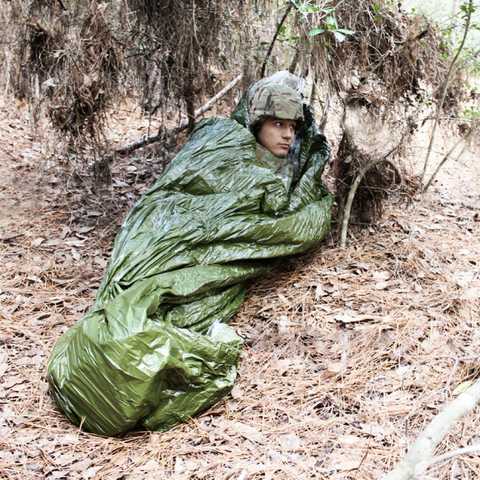
Rescue blankets are typically included in first aid kits. Due to their waterproof, windproof, and lightweight nature (50-70 g for a blanket sized 210 by 130 cm), they have become popular among tourists and find wide applications: as wraps, blankets, ground covers, vapor barriers, ponchos, or ultra-lightweight shelters, mirrors for reflecting sunlight, infrared mirrors (silver side) to enhance the heat effect from a fire, and also for creating beacons.
Due to their thinness, rescue blankets do not provide complete protection against heat loss associated with conduction, so their use is recommended in combination with other insulating means.
To protect against cold, it is recommended to use a thermal blanket with the silver side inside, and to prevent overheating - conversely, with the silver side outside.
The military version involves covering one side (outer) of the blanket with dark-colored fabric (dark green) to eliminate the reflective effect. Thus, military rescue blankets usually have a silver coating on both sides. Rescue blankets are used for emergency medical assistance, in tourist trips, extreme situations, or during emergencies.
It is also important to remember that the material from which the blanket is made does not allow moisture to pass through, so it should be periodically wiped off moisture during prolonged use. In addition to its small weight and properties of waterproofness and air permeability, the blanket is characterized by high strength and can be used for carrying the injured. However, it is important to consider the total mass, not just the injured person's mass. Manufacturers also indicate the maximum weight that such a blanket can "endure," which usually ranges from 60 to 120 kg, in accordance with technical specifications.
Effectiveness of Thermal Blankets
Thermal blankets are assessed for their effectiveness in providing thermal comfort and retaining heat in various conditions. The effectiveness of such blankets is determined by several factors:
- Thermal Insulation: Quality material and construction of thermal blankets provide effective thermal insulation, preventing heat loss and helping maintain body thermal balance.
- Weight and Portability: Effective thermal blankets have lightweight and compact dimensions, making them convenient for carrying and using in various conditions, including tourism and extreme situations.
- Weather Resistance: If a thermal blanket has properties of waterproofness and windproofness, it enhances its effectiveness in wet or windy climates.
- Materials and Technologies: The use of insulating materials such as special films, aluminum, or other thermoactive components can increase heat retention and provide additional protection against external factors.
- Maximum Load: Manufacturer information on the maximum weight a thermal blanket can withstand is important for safety and effective use in different situations.
The evaluation of the effectiveness of a thermal blanket takes into account these factors and depends on specific needs and usage conditions.
Advantages of Rescue Blankets
One of the key advantages of rescue blankets is their portability. Lightweight and compact size allow them to be conveniently carried in various situations. This is especially important in evacuation, tourism, or rescue operations, where every gram can be crucial.
In addition, rescue blankets are often equipped with waterproof properties, allowing them to protect against rain and moisture. Wind resistance is another advantage, helping to shield against cold wind and improve overall thermal insulation.
The versatility of rescue blankets, from acting as a wrap to a vapor barrier or poncho, makes them a versatile tool in different situations. Also, considering their affordability and low price, they become accessible means of safety provision in hazardous conditions.
Taking all these factors into account, rescue blankets become reliable companions for travels, outdoor activities, and rescue operations, providing necessary thermal protection in various situations.
Innovations in Thermal Blanket Development
The development of thermal blankets actively utilizes innovations to improve their effectiveness and functionality. This includes the use of modern materials with high heat reflection, new-generation insulation fillings, heat regulation systems, as well as technologies for water and wind resistance. Environmentally friendly materials and integration of elements that can change their structure also become important aspects of modern thermal blanket development.
Modern Materials
The development of thermal blankets occurs in the context of constant innovations and implementation of new technologies to improve their effectiveness and functionality. Here are some innovations actively used in this area:
- Heat Reflection Technologies: The use of modern materials with high heat reflectivity, such as metallic films or specialized coatings, allows for retaining more heat within the blanket and providing better insulation.
- Materials with Structural Changes: Utilizing materials that can change their structure according to temperature or other external factors enables the creation of thermal blankets that adapt to the specific needs of the user.
- New-Generation Insulation Fillings: Incorporating modern insulation materials, such as aerogels with high insulating properties at minimal weight, can significantly enhance the thermal characteristics of the blanket.
- Heat Regulation Systems: Built-in temperature control systems or heating elements enable users to regulate thermal conditions when using the blanket, providing greater flexibility in various situations.
- Waterproof and Windproof Technologies: The application of new technologies to ensure the waterproof and windproof properties of the blanket makes them more versatile and effective in different weather conditions.
- Environmentally Friendly Materials: The focus on using biodegradable or recycled materials in the production of thermal blankets allows for creating products that have less impact on the environment.
These innovations in the field of thermal blankets are intended not only to enhance their effectiveness but also to meet modern requirements for convenience, environmental safety, and flexibility of use.
Integration with Other Medical Devices
Integrating thermal blankets with other medical devices expands their capabilities in providing comprehensive assistance and ensuring comfortable treatment. Some innovations and practical applications of this approach include:
| No. | Medical Application | Integration with Thermal Blankets |
|---|---|---|
| 1 | Temperature Therapy | Thermal blankets can be integrated with temperature therapy systems to treat muscle tension, inflammation, or other medical conditions. This may involve heating or cooling elements within the blanket. |
| 2 | Medication and Aromatherapy | Adding pockets for medications or aromatic herbs to thermal blankets allows combining the heat effect with medication or aromatherapy for improving patient condition. |
| 3 | Health Monitoring Electronics | Built-in sensors or electronic devices in thermal blankets can be used to monitor health indicators such as body temperature, heart rate, or blood oxygen level. |
| 4 | Massage Elements | Integration of massage elements into thermal blankets provides patients with additional muscle relaxation, enhancing treatment and ensuring comfort. |
| 5 | Infusion Systems | Thermal blankets with the capability to integrate infusion systems are designed to deliver medications or fluids at optimal temperatures. |
These integrations enable the creation of innovative medical solutions, combining the effectiveness of thermal therapy with other medical devices to improve treatment outcomes and provide greater comfort to patients.
Practical Aspects of Using in Military Medicine
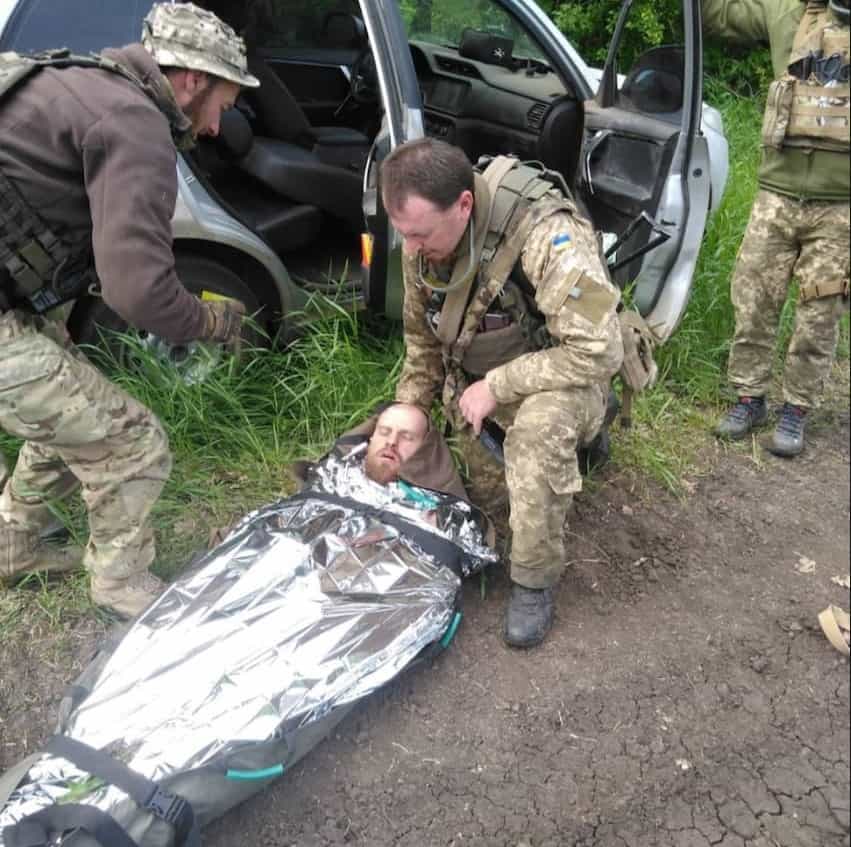
Medical personnel use thermal blankets in a wide range of situations where they become an essential part of equipment for providing urgent medical assistance and support in conditions often life-threatening to military personnel.
One of the key functions of thermal blankets in military medicine is their ability to retain heat in cases of injuries or frostbite, helping to prevent hypothermia and preserving the patient's vital thermal energy. This becomes critical in extreme conditions such as low temperatures or severe weather.
Thermal blankets possess effective insulation properties, allowing them to retain body heat and protect against wind, rain, or snow. This not only promotes the comfort of the wounded but also reduces the risk of further complications due to weather exposure.
The versatile use of thermal blankets in military medicine is also a key aspect. They can be used as a cover, carrier, poncho, or vapor barrier depending on the specific situation and medical service needs.
The lightweight and portability of thermal blankets play a crucial role in transporting wounded individuals, especially in conditions of rapid movement or evacuation on the battlefield. This can impact the speed and effectiveness of medical assistance.
Protection against infections becomes an additional benefit of using thermal blankets in military medicine, as they can act as a barrier to prevent unwanted microorganisms.
Finally, thermal blankets can be used in medical stations or field hospitals as temporary equipment, providing the necessary thermal comfort for patients.
All these aspects make thermal blankets an important tool for medical personnel in challenging conditions.
FAQ
How is a thermal blanket used in tactical medicine?
A thermal blanket is used to maintain or increase the body heat of wounded or sick individuals in military or extreme conditions. It can be used to prevent hypothermia during the transportation of casualties on medical evacuation vehicles or to provide first aid on the battlefield.
Why is a thermal blanket important in tactical medicine?
A thermal blanket plays a key role in preserving the body heat of wounded or sick individuals in conditions where significant heat loss can occur, such as low temperatures, humidity, or wind. Maintaining optimal body temperature reduces the risk of complications and improves treatment outcomes.
What types of thermal blankets exist in tactical medicine?
In tactical medicine, various types of thermal blankets are used, including disposable film blankets, reusable foil blankets, tent-like blankets, and insulated blankets. Each type has its advantages and can be used depending on specific conditions and needs.
